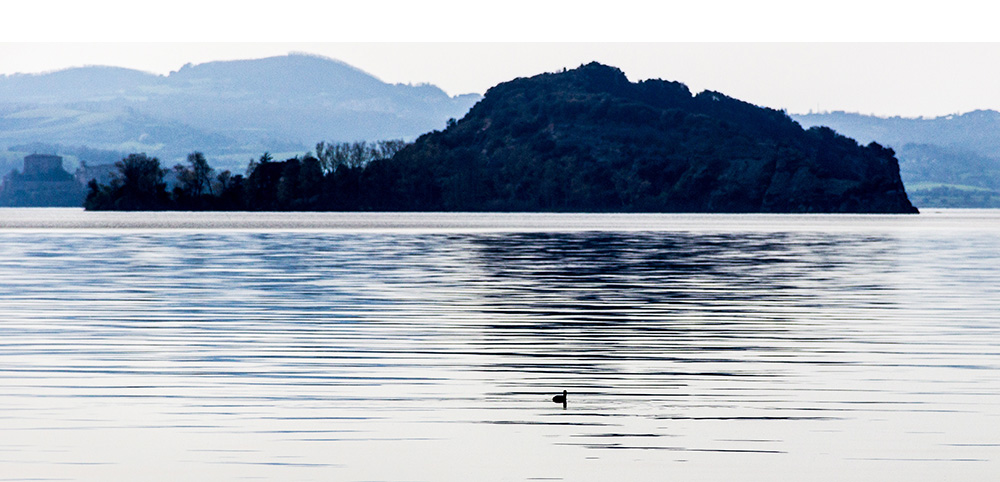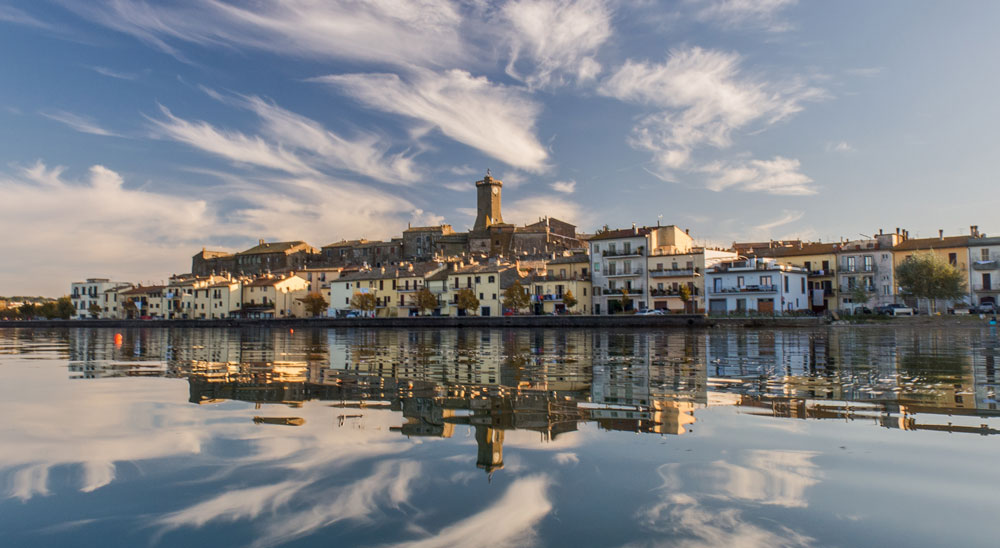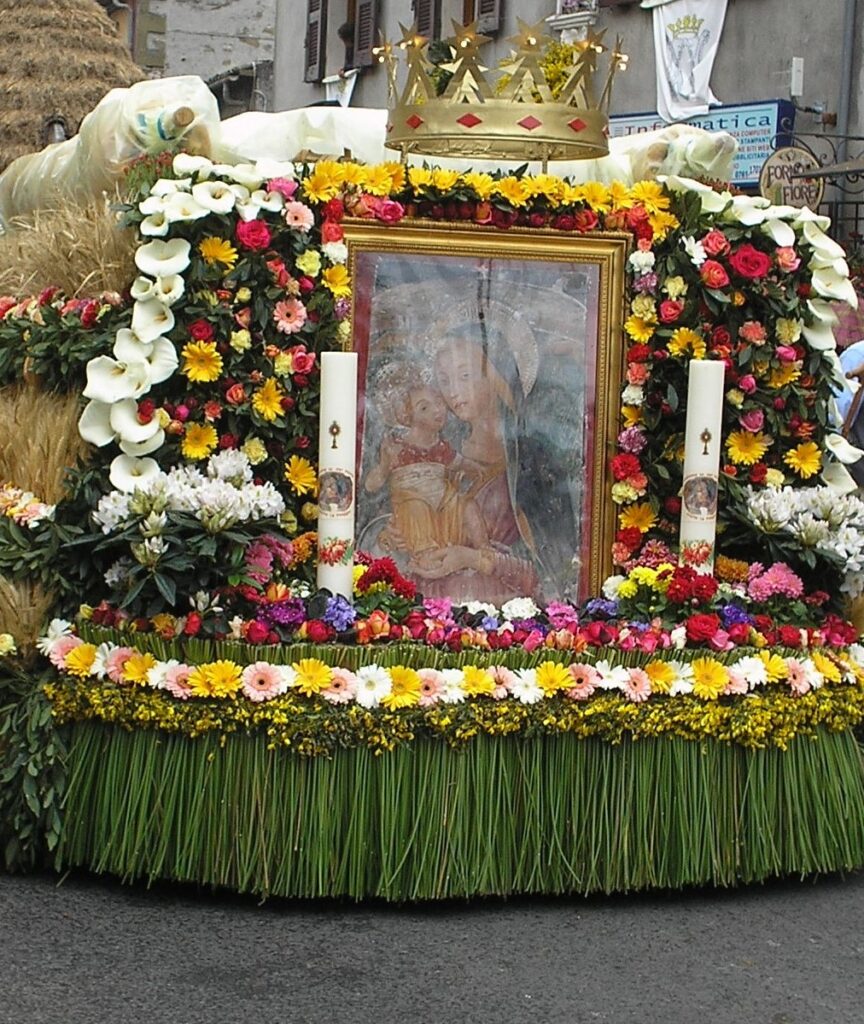Marta is a charming village overlooking Lake Bolsena. In the medieval old town, among narrow streets and houses huddled around the city walls, there are the remains of the Rocca, built by the will of Pope Urban IV in the second half of the 13th century.

From the town, the rugged and wild Martana Island is clearly visible, now privately owned with its suggestive crescent shape. Martana Island is linked to historical events such as the assassination of Amalasuntha (535 AD). It is said that the daughter of Theodoric, king of the Ostrogoths, was killed by her cousin Theodatus. This event was the pretext for Emperor Justinian to unleash the so-called Gothic War.
Inland, there is the Templar site of Castell’Araldo. La Cannara is an ancient medieval building frequented already in Etruscan times for eel fishing in transit between Lake Bolsena and the Tyrrhenian Sea. It is a unique complex and the site of a beautiful botanical garden.

The Clock Tower has ancient origins, probably before the 12th century. Damaged during the war, the tower was rebuilt in 1323. In the former episcopal palace, or “Salone,” there is the Permanent Exhibition of Prehistoric Archaeology with artifacts dating from the Middle Paleolithic to the late Bronze Age found in the Marta river and the lake.
La Cannaiola is a typical wine from Marta to sip with local dry desserts such as hazelnut tozzetti, wine donuts, anise donuts, or fruit tarts and sweet ricotta ravioli. A typical seasonal dish is the scafata, a soup based on simple ingredients like broad beans. Also, try the fried whitebait.

Among the popular festivals is the Feast of Madonna del Monte. It is also known as the Feast of Passate, celebrated on May 14th with ancient folk rituals of offerings to Mother Earth. Celebrations begin at dawn with drum rolls and the choirs of reapers. The climax of the celebration is the parade that crosses Marta from the lake shores to the Sanctuary of Madonna del Monte. Here, the fruits of the earth are offered to the Madonna: wheat, fruit, vegetables, and oil. On this occasion, the Ciambella della Barabbata is prepared, another name for Marta’s most characteristic and ancient festival. The Knights pay homage to Madonna del Monte by carrying the offerings on their arms.
In ancient times, they were preserved, and even though they had become hard, they were consumed by fishermen and farmers as a food reserve.
The Sagra del Lattarino is also very popular at the beginning of June. Almost 50 years ago, a group of fishermen decided to celebrate lake fish.
